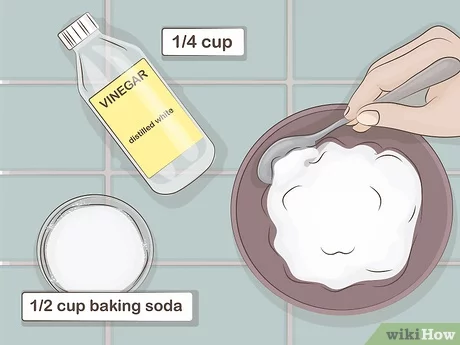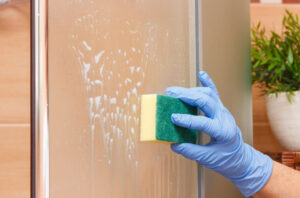
The Crystal Clear Solution: A Comprehensive Guide on How to Get Rid of Soap Scum on Glass
Introduction
Glass shower doors and surfaces add a touch of elegance to bathrooms, but over time, the accumulation of soap scum can cloud their clarity. If you’ve been grappling with soap scum and wondering how to restore the shine to your glass, you’re in the right place. In this guide, we’ll explore effective methods and tips on how to get rid of soap scum on glass, leaving your bathroom looking pristine.
Understanding Soap Scum
Before we delve into the cleaning process, it’s essential to understand what soap scum is. Soap scum is a white or cloudy film that forms on glass surfaces when the fatty acids in soap react with minerals in hard water. Over time, this combination creates a stubborn layer that can be challenging to remove with regular cleaning methods.
Materials Needed
Gather the following materials to effectively combat soap scum on glass:
- White Vinegar: A natural acid that breaks down soap scum.
- Baking Soda: A gentle abrasive for scrubbing.
- Lemon Juice: Contains citric acid for cutting through soap scum.
- Dish Soap: Helps to cut through grease and residue.
- Rubber Gloves: Protect your hands during the cleaning process.
- Microfiber Cloth or Sponge: Ideal for scrubbing and wiping surfaces.
- Squeegee: For maintaining glass clarity after cleaning.
Step-by-Step Cleaning Guide
1. Preparation and Ventilation
Ensure the bathroom is well-ventilated. Open windows or turn on the exhaust fan to provide adequate airflow. Put on rubber gloves to protect your hands during the cleaning process.
2. Remove Excess Buildup
Use a dry cloth or sponge to remove any loose debris or surface dust. This initial step helps prevent scratching the glass when applying cleaning solutions.
3. White Vinegar Solution
Create a solution of equal parts white vinegar and water in a spray bottle. Liberally spray the glass surfaces with the solution, covering all areas affected by soap scum.
4. Allow the Solution to Sit
Let the white vinegar solution sit on the glass for at least 10 to 15 minutes. The acidity of the vinegar works to break down the soap scum, making it easier to remove.
5. Scrub with Baking Soda Paste
In a small bowl, mix baking soda with a small amount of water to create a paste. Apply the baking soda paste to a microfiber cloth or sponge and gently scrub the glass in circular motions. Baking soda acts as a mild abrasive, aiding in the removal of stubborn soap scum.
6. Lemon Juice Boost
For an extra boost, squeeze fresh lemon juice onto the glass. Lemon juice contains citric acid, which helps cut through soap scum and adds a pleasant fragrance to the cleaning process.
7. Rinse Thoroughly
Use clean water to rinse the glass surfaces thoroughly. Ensure all traces of the cleaning solutions are removed. This step prevents any residue from building up on the glass.
8. Dry and Polish with a Microfiber Cloth
Dry the glass surfaces with a clean, dry microfiber cloth. This not only removes any remaining water but also helps polish the glass, leaving it streak-free and clear.
9. Squeegee for Ongoing Maintenance
To maintain the clarity of your glass shower doors, invest in a squeegee. After each shower, use the squeegee to remove excess water and prevent soap scum buildup.
10. Apply Protective Coating
Consider applying a protective coating specifically designed for glass surfaces. These coatings create a barrier that repels water, soap, and minerals, making it easier to clean and preventing future soap scum buildup.
Frequently Asked Questions
1. Can I use any type of vinegar to clean soap scum on glass?
White vinegar is recommended for cleaning soap scum on glass due to its high acidity. Avoid using colored or flavored vinegars to prevent staining.
2. How often should I clean glass surfaces to prevent soap scum buildup?
Regular maintenance is key. Wiping down glass surfaces after each use and performing a deep clean every few weeks can prevent soap scum from becoming stubborn.
3. Is it safe to mix vinegar and baking soda?
Yes, it is safe to mix vinegar and baking soda. However, the fizzing reaction may be vigorous, so mix them in a bowl rather than applying them directly to the glass.
4. Can I use a coarse scrubber on glass to remove soap scum?
Avoid using coarse scrubbers or abrasive materials that may scratch the glass. Stick to soft-bristled brushes, microfiber cloths, or sponges.
5. What if the soap scum is not completely removed after the first attempt?
For stubborn soap scum, repeat the cleaning process or try increasing the concentration of white vinegar in your solution. Patience and persistence are key.
6. Can I use commercial glass cleaners for soap scum removal?
While some commercial glass cleaners may be effective, natural solutions like vinegar and baking soda are often safer and more eco-friendly.
7. Will the lemon juice leave a residue on the glass?
No, lemon juice should not leave a residue. However, it’s essential to rinse the glass thoroughly after using lemon juice to ensure no acidic residue remains.
8. Is it necessary to wear gloves during the cleaning process?
Wearing rubber gloves is recommended to protect your hands from the cleaning solutions and potential skin irritation.
9. Can I use apple cider vinegar instead of white vinegar?
While apple cider vinegar may have some cleaning properties, white vinegar is generally preferred for its clarity and higher acidity.
10. Should I avoid using soap on glass surfaces to prevent soap scum?
While soap scum is a natural byproduct of using soap, choosing soap with fewer additives and using a squeegee after each shower can minimize buildup.
Conclusion
Maintaining the clarity of glass surfaces in your bathroom doesn’t have to be a daunting task. By understanding the nature of soap scum and employing the right cleaning techniques, you can keep your glass shower doors and other surfaces crystal clear. Follow the steps outlined in this comprehensive guide, and bid farewell to soap scum, welcoming back the pristine shine to your glass fixtures.


